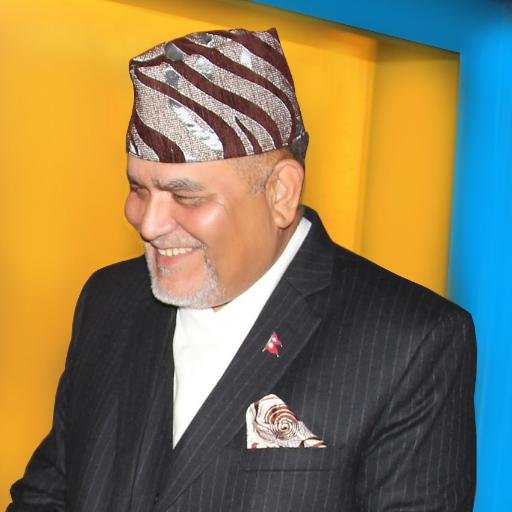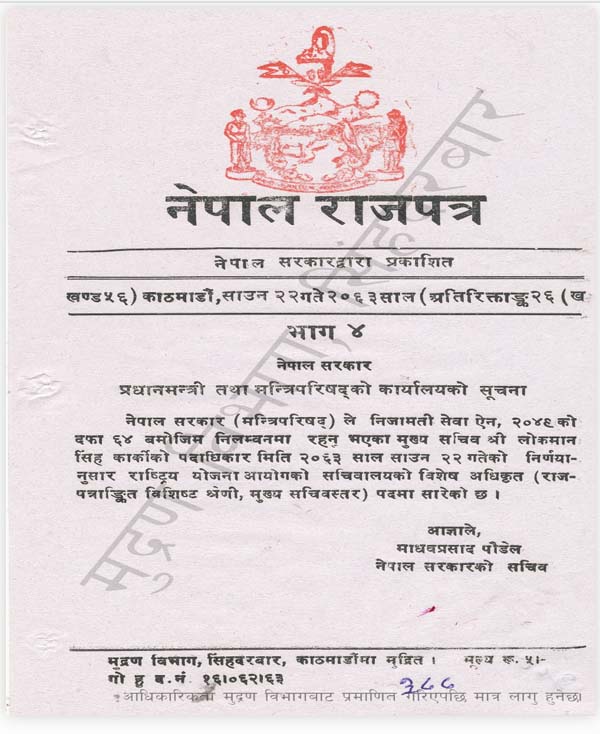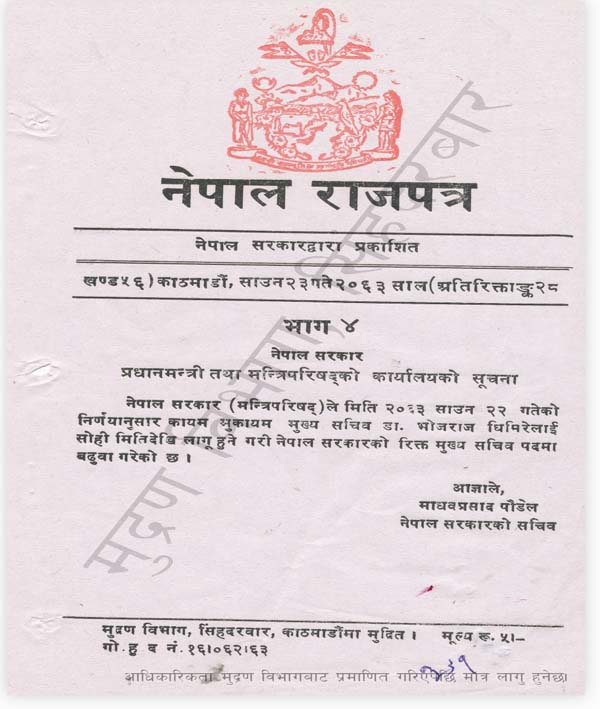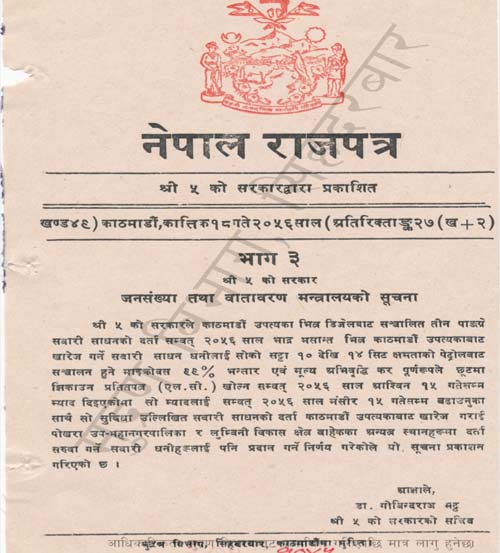CIAA website credits Karki for things he didn’t do
South Asia Check / August 23, 2016

CIAA chief Lokman Singh Karki Photo: twitter.com/LokmanKarki
The official website of the Commission for the Investigation of Abuse of Authority (CIAA) has made some claims about its chief commissioner, Lokman Singh Karki.
South Asia Check has examined if the claims are factual.
Claim 1
“He served as Nepal government’s chief secretary from Chaitra 2062 to Chaitra 2065…”

Fact
According to the Office of the Prime Minister and Council of Ministers (OPMCM), Karki was appointed chief secretary in Ashwin 2062, and not in Chaitra 2062 as claimed by the CIAA website. Similarly, contrary to the CIAA website’s claim, Karki did not serve as chief secretary till Chaitra 2065, he was in the post only till Baishakh 28, 2063. He served in the post about three years less than what has been claimed on the CIAA website.
After the people’s movement of 2062/63, the government suspended Karki from chief secretary. Later, on Shrawan 22, 2063, he was transferred to the National Planning Commission.
Please see the Nepal Gazette of Shrawan 22, 2063 for the government decision.

The government on Shrawan 22, 2063 had appointed Dr Bhojraj Ghimire to the post of chief secretary. Please see the Nepal Gazette published on Shrawan 23, 2063.

From these facts, it becomes clear that Karki had not worked in the capacity of chief secretary till Chaitra 2065. Therefore, the claim that Karki served as chief secretary between Chaitra 2062 and Chaitra 2065 is incorrect.
Claim 2
“With the objective of making Nepal’s public administration people-oriented, transparent and accountable, the Good Governance (Management and Operation) Act, 2064 was formulated, promulgated and implemented on his initiative while he was working in the capacity of chief secretary of the government of Nepal.”

Fact
The Act was verified and published in the Nepal Gazette on Magh 23, 2064 and subsequently implemented.
This shows that Karki could have made some contribution in the initial stage of the formulation of the Act, but he was not responsible for the promulgation and implementation of the Act, because the Act was promulgated and implemented after 18 months his removal from the post of chief secretary.
Therefore, this claim is also incorrect.
Claim 3
“While he was serving in the capacity of secretary at the then Ministry of Population and Environment, he made efforts for the development of environment-friendly technology and in order to curb air pollution in the Kathmandu Valley, it was on his initiative that it was made mandatory for the three-wheeled vehicles operating within the Valley to be converted into battery-operated ones, and the pollution test certificate was made compulsory for all vehicles operating in the Kathmandu Valley.”

Fact
The three-wheeled vehicles mentioned on the CIAA website were the diesel-operated “Vikram Tempos”. The process to convert these tempos into battery-operated ones was started in 1993 AD. The government of Nepal banned “Vikram Tempos” in the Kathmandu Valley on Mangshir 15, 2056. Please see the notice published in Nepal Gazette below.

The CIAA website states that Karki had served as secretary at various ministries from Chaitra 2057 to Chaitra 2062. This shows that diesel-operated Vikram Tempos had been banned in the Kathmandu Valley at least 15 months before Karki was appointed secretary.
So Karki cannot be credited for something which was done 15 months before his appointment as secretary at the Ministry of Population and Environment.
This material is copyrighted but may be used for any purpose by giving due credit to southasiacheck.org.
Comments
Latest Stories
- In Public Interest Covid-19 cases are low, but that’s not an excuse to avoid vaccination
- In Public Interest What is BF.7, the sub-variant that has the world by its grip?
- In Public Interest Threat of a new Covid-19 wave looms large amid vaccine shortage in Nepal
- In Public Interest As cases decline, Covid-19 test centres in Kathmandu are desolate lot
- In Public Interest Dengue test fee disparity has patients wondering if they’re being cheated
- In Public Interest As dengue rages on, confusion galore about what it is and what its symptoms are. Here’s what you need to know
In Public Interest
 Covid-19 cases are low, but that’s not an excuse to avoid vaccination
The Pfizer-BioNTech bivalent vaccines authorised by the Nepal Government provide better protection a...
Read More
Covid-19 cases are low, but that’s not an excuse to avoid vaccination
The Pfizer-BioNTech bivalent vaccines authorised by the Nepal Government provide better protection a...
Read More
- What is BF.7, the sub-variant that has the world by its grip?
- Threat of a new Covid-19 wave looms large amid vaccine shortage in Nepal
- As cases decline, Covid-19 test centres in Kathmandu are desolate lot
- Dengue test fee disparity has patients wondering if they’re being cheated
- As dengue rages on, confusion galore about what it is and what its symptoms are. Here’s what you need to know